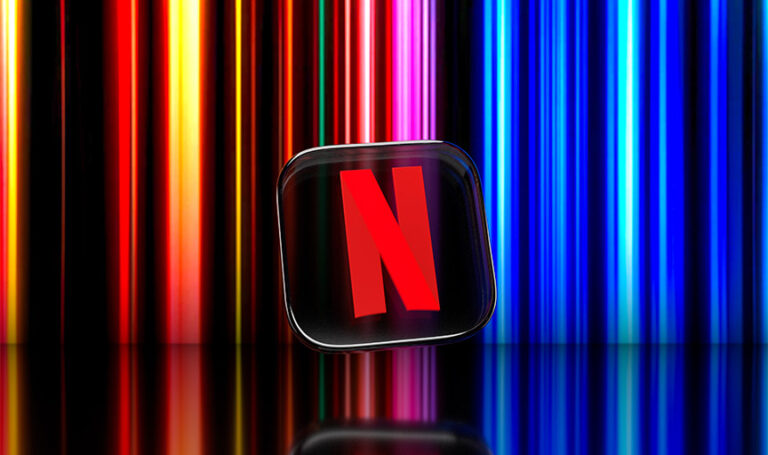Do you watch or listen to content at 1.5x speed? Here’s what it actually does to you

Back in 2020, Netflix introduced the option to vary playback speeds on its mobile app, earning largely positive reviews—with the exception of director Judd Apatow, who tweeted: “Don’t fuck with our timing. We give you nice things. Leave them as they were intended to be seen.” Many viewers, on the other hand, were excited by the prospect. For instance, Vulture critic Nicholas Quah embraced the new feature and even credited it with exposing him to content he might not otherwise watch. “If there has been a fundamental change in my relationship with Netflix […] it’s that I have become far more likely to try new things these days. Most of what I speed-watch—typically at 1.25x speed—are shows that some would call trash, although I detest the word,” he commented.
This new playback feature on Netflix made viewing digital content a more inclusive experience. For example, James Doubek, editor and reporter at NPR, noted how it could be a positive for blind and deaf viewers who watch digital media with audio descriptions. By being able to slow down the playback speed, they can better understand these indicators or have more time to read closed captioning.
When speaking to NPR, Everett Bacon, a board member of the National Federation of the Blind (NFB), even responded to Apatow’s tweet. “Having that speed feature […] allows me to better understand and better comprehend what they were trying to portray in their creation. I love a lot of Judd Apatow’s work, and I think if he understood me as a blind individual and how I consume content, he would applaud this new feature by Netflix,” Bacon explained.
With all of this in mind, more platforms (including YouTube, Spotify and TikTok) have inevitably started offering a variety of playback speeds in recent years, allowing users to choose how they consume content. Although, when it comes to speed-reading, watching or listening, there are a few pros and cons involved.
@linktr.ee We love a timesaving TikTok hack for those storytimes #storytimevideos #grwm #tiktoknews #tiktokhacks #tiktokfeature #tiktokstrategy #playbackspeed #lifehacks #contentcreator #tiktoktips
♬ Da Girls - Ciara
Jared Cooney Horvath, an educational neuroscientist from The University of Melbourne, told ABC that the foveal spot located at the back of each of our eyes limits what one can focus on when viewing. “If something isn’t in that spot, then bad news, you’re not going to be reading it,” says Horvath. However, there are exceptions to this rule when consuming media that has a narrative. Fiction often contains repetitive aspects, such as characters, settings and familiar plot arcs. This means you’ll probably be able to skim a story (whether that be in a book or on a screen) and follow along—but the same can’t be said for something that’s fact-heavy.
“Without that ‘redundancy’ you have nothing to hang your hat on. You get to the end and your comprehension is just trash,” explains Horvath. So, if you’d like to recall what you’re watching down the line, the neuroscientist recommends consuming media at 1.25x speed at the maximum.
That being said, many netizens confess to watching or listening to content up to 2x the intended speed more often than not. If you’re not familiar with what sped-up media is, here’s an example of Toy Story at 2x speed:
Freelance writer and editor Zuva Seven told Mashable that she consumes YouTube videos, Netflix shows and lectures (where possible) at 1.5 to 2x speed. “It was actually around the time I was pursuing my ADHD diagnosis,” she said. “Something went viral about how listening to things at that pace is beneficial for neurodivergent people and I haven’t looked back since!”
The r/ADHD subreddit echoes this idea. Here, you’ll find posts speaking to how neurodiverse people are able to concentrate more fully when content is sped up. “I was having trouble paying attention to YouTube videos I was watching for class, so I increased the speed until I was using literally all of my effort to understand what the instructor was describing,” stated one Reddit user. “Suddenly I wasn’t constantly skipping around in the video or fighting myself from tabbing away while the instructor was talking.”
With an increased awareness of ADHD coupled with technological advancements made during the pandemic, it’s easy to see why Gen Z is turning to sped-up content. And, while speeding up media may seem antithetical to remembering or focusing on it, research shows that this isn’t the case. Dillon Murphy—a postdoctoral researcher in psychology at Arizona State University—spoke to this, telling SCREENSHOT: “In our paper, we found that 85 per cent of students were watching at faster than normal speed.” Due to an increasing reliance on digital resources, “individuals are turning to speed-watching and speed-listening as efficient ways to manage the increased volume of digital content available for education, work and leisure. This approach allows them to consume more information in less time, adapting to the demands of a rapidly evolving digital landscape,” explains Murphy.
So, what does this mean for the near future of digital media and content? Potentially, it may affect how films and TV shows (and, of course, podcasts and social media videos) are made and consumed. “This could lead to adjustments in pacing, editing and even the complexity of the narrative or information presented,” says Murphy. “For example, filmmakers and podcast producers might opt for clearer, more concise storytelling, or include more visual or auditory cues to aid comprehension at higher speeds.”
The bottom line? While speeding up media may seem like it’s ruining attention spans—for some, it’s actually boosting their focus and creating a more enjoyable viewing experience.




